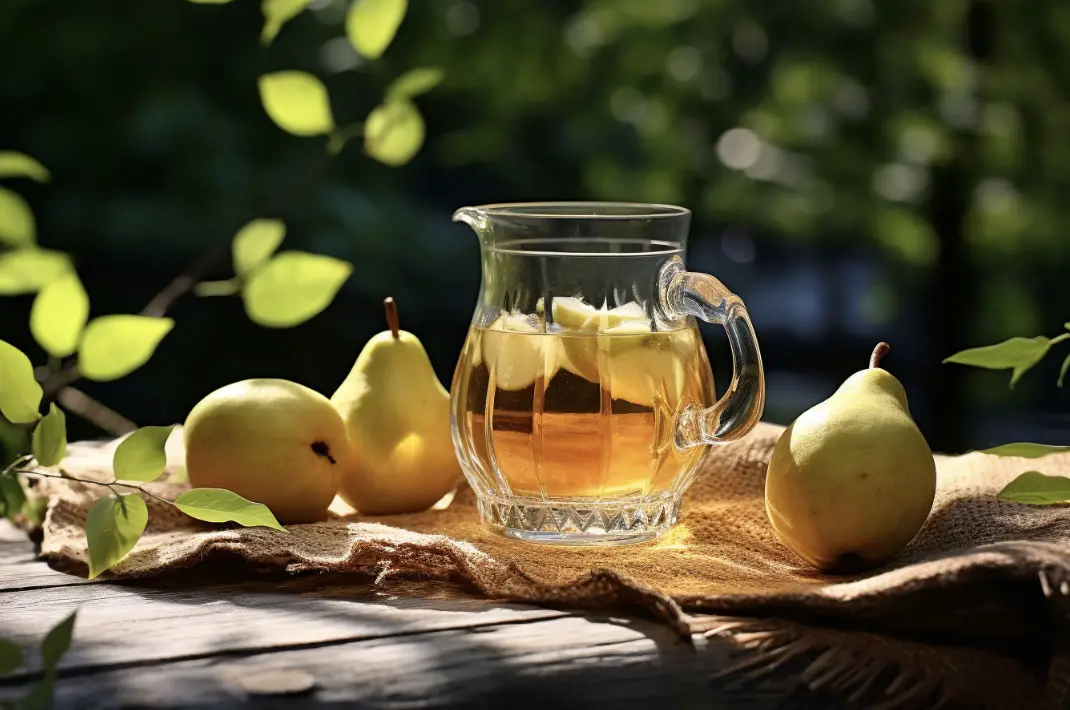Yes, you can make cider from store-bought apple juice. In fact, this is a great way to try your hand at making cider without having to invest in expensive equipment or going through the process of sourcing, washing, and pressing your own apples. This blog post is aimed at sharing my first-hand experience with making cider from store-bought apple juice and providing you with the knowledge and tips to help you successfully create your own homemade cider. Let’s get started!
Choosing the Right Apple Juice
Not all store-bought apple juice is created equal when it comes to making cider. Here are some tips on what to look for when selecting your juice:
1. Look for 100% pure apple juice with no added sugars or preservatives. These additives can interfere with the fermentation process and affect the final taste of your cider.
2. Check the ingredient list for any added chemicals, such as potassium sorbate or sodium benzoate, which are used as preservatives. These can hinder or even prevent fermentation.
3. Choose a juice with a blend of apple varieties if possible, as this will provide a more complex and interesting flavor profile for your cider. Look for a mix of sweet, tart, and bitter apples.
4. Consider the container the juice comes in. If possible, choose a juice that comes in a glass or plastic container that can be easily cleaned and reused for fermentation.
Preparing the Apple Juice
Before you can start fermenting your apple juice, there are a few things you’ll need to do to prepare it:
1. Sanitize your equipment: Make sure all of your fermentation equipment, such as the fermenter, airlock, and any utensils you’ll be using, are thoroughly cleaned and sanitized. This will help to prevent any potential contamination during the fermentation process.
2. Pour the apple juice into your fermenter: Make sure to leave some headspace at the top of the fermenter to allow for expansion during fermentation.
3. Take an initial gravity reading: Use a hydrometer to take an initial gravity reading of your apple juice. This will give you an idea of the potential alcohol content of your cider and help you track the progress of fermentation.
Adding Yeast to Your Apple Juice
There are many different strains of yeast that you can use to ferment your apple juice, and each will produce slightly different flavors and characteristics in your finished cider. Some popular options include:
– Champagne yeast: This yeast is known for producing a clean, crisp flavor and a relatively high alcohol content.
– Ale yeast: Using an ale yeast will produce a fruitier flavor profile and a lower alcohol content.
– Cider yeast: Specially formulated for fermenting cider, this yeast will produce a more traditional and balanced cider flavor.
To add the yeast to your apple juice, simply follow the instructions on the yeast packet, which will typically involve rehydrating the yeast in a small amount of water before adding it to the fermenter.
Fermenting Your Cider
Once you’ve added the yeast, it’s time to let the fermentation process begin. Keep the following tips in mind during fermentation:
1. Maintain a consistent temperature between 60-70°F (15-21°C) for the best results. Lower temperatures can slow down fermentation, while higher temperatures can produce off-flavors.
2. Use an airlock to keep out oxygen and prevent contamination while allowing carbon dioxide to escape during fermentation.
3. Monitor the fermentation progress by taking gravity readings every few days with your hydrometer. Once the gravity stops dropping and remains consistent for a few days, fermentation is complete.
4. Fermentation usually takes 1-2 weeks to complete, depending on the yeast strain and temperature.
Racking and Aging Your Cider
Once fermentation is complete, it’s time to rack your cider into a secondary fermenter. This process helps to separate the cider from the sediment and dead yeast cells that have settled at the bottom of the primary fermenter.
1. Rack your cider by siphoning it into a clean, sanitized secondary fermenter, making sure to leave the sediment behind.
2. Age your cider in the secondary fermenter for 1-2 months, or longer if desired, to allow the flavors to develop and mature.
3. Taste your cider periodically during the aging process to determine when it’s ready to be bottled. It’s up to your personal preference when it comes to how long you’d like to age your cider.
Bottling Your Cider
When you’re happy with the taste of your cider, it’s time to bottle it. You’ll need the following equipment:
– Clean, sanitized bottles (either glass or plastic will work)
– Bottle caps or corks
– A bottling bucket with a spigot
– A bottle filler and siphon
1. Siphon your cider from the secondary fermenter into the bottling bucket, taking care not to disturb the sediment at the bottom.
2. Fill your bottles using the bottle filler, leaving about an inch of headspace at the top.
3. Cap or cork your bottles and store them in a cool, dark place.
Carbonating Your Cider
If you’d like to add some carbonation to your cider, you can do so by adding a small amount of sugar to each bottle before capping or corking. This will provide the yeast with some additional sugar to ferment, producing carbon dioxide and giving your cider some fizz.
1. Measure out your priming sugar (usually about 1/2 teaspoon per 12-ounce bottle, or 1 teaspoon per 22-ounce bottle).
2. Add the sugar to each bottle before filling with cider.
3. Cap or cork your bottles and let them sit for 2-3 weeks to carbonate.
Enjoying Your Homemade Cider
Once your cider has been bottled and carbonated, it’s time to enjoy the fruits of your labor! Store your cider in the refrigerator and enjoy it cold for the best taste.
# Conclusion
Yes, you can make cider from store-bought apple juice and with a little time, patience, and effort, you can create a delicious homemade cider that you’ll be proud to share with friends and family. To recap, here are the key steps and facts to remember:
1. Choose a high-quality, 100% pure apple juice with no added sugars or preservatives.
2. Sanitize your equipment and prepare your apple juice for fermentation.
3. Select a yeast strain that will produce the desired flavor profile in your cider.
4. Ferment your cider at a consistent temperature and monitor the progress.
5. Rack and age your cider for 1-2 months, or longer if desired.
6. Bottle and carbonate your cider using priming sugar for a fizzy finish.
7. Store and enjoy your homemade cider cold and shared with friends.
Happy brewing and enjoy your homemade cider!
FAQs
How to make cider from shop bought apple juice?
To make cider from shop bought apple juice, you will need to add yeast to the juice and let it ferment for several weeks. The process involves sanitizing all equipment, adding yeast to the juice, and allowing it to ferment at a controlled temperature. Once fermentation is complete, the cider can be bottled and aged for several months to improve its flavor.
Can you make hard cider from store bought apple cider?
Yes, you can make hard cider from store bought apple cider by adding yeast to the cider and allowing it to ferment. However, it is important to ensure that the cider does not contain preservatives such as potassium sorbate or sodium benzoate, as they can prevent fermentation.
Can apple cider be turned into hard cider?
Yes, apple cider can be turned into hard cider through a process called fermentation. Yeast is added to the cider and consumes the sugar, producing alcohol as a byproduct. The longer the cider ferments, the stronger the alcohol content will be.
Can you use apple juice for apple cider?
No, apple juice and apple cider are not the same thing. Apple cider is made by pressing fresh apples, while apple juice is typically filtered and pasteurized. However, some brands of apple juice may be labeled as “apple cider” for marketing purposes.
Can you make hard cider out of store bought apple juice?
Yes, you can make hard cider out of store bought apple juice as long as it does not contain any preservatives like potassium sorbate or sodium benzoate. These preservatives can inhibit the fermentation process. It is also important to choose a juice that is not pasteurized or has been minimally processed as this can affect the flavor and yeast activity.





